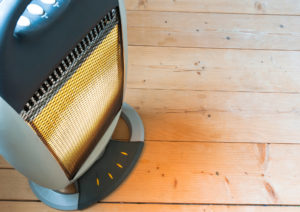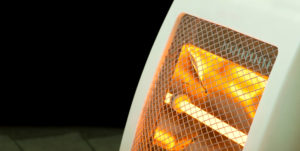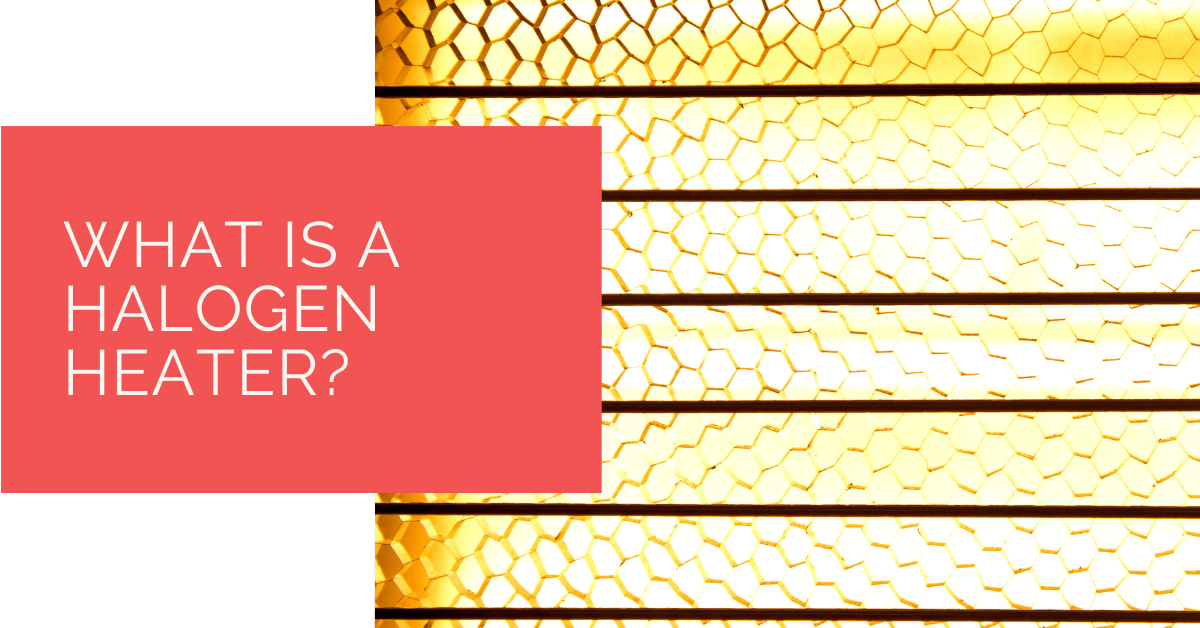Winter can be quite cold and unforgiving, and dipping temperatures warrant using a heater to warm your house. A standard heater provides you with sufficient warmth, but it comes with its own set of issues.
The above-mentioned heater is bulky and lacks portability. As a result, it does not provide any mobile use. Don’t fret, though; that doesn’t mean you can’t enjoy a warm drink from the comfort of your yard!
The future is now, thanks to technology! The market is dotted with heaters that do not occupy much space. To add a feather to its cap, these heaters are also easy on the wallet!
Curious to know about them at length? Read on to find out!
Contents
Key Takeaways
- Halogen heaters are lightweight, portable, and use infrared light as a source of heat. They are particularly suitable for outdoor heating in backyards or terraces.
- Halogen heaters have several advantages, including a long bulb lifespan, eco-friendliness, targeted radiant heat, energy efficiency, portability, and low cost.
- Limitations of halogen heaters include limited heating capacity for small areas, potential brightness at night, and the emission of infrared rays that can be detrimental to health if used for extended periods. However, their advantages often outweigh these drawbacks, making them a practical choice for outdoor heating needs.
What Are the Different Types of Room Heaters?
A heater is a must for the coldest days of every year for every household, but the greatest confusion is about the type of heaters most convenient for you. Let us clear all your doubts with our list, then.
Fan Heaters
Fan heaters use a fan as a source to supply air over a heating element. Hot air is thus expelled out of them into a room . Fan heaters can be of two types – electrical and externally vented.
An electric fan heater utilizes an electric current to run. The current is passed over the heating element, where it is converted into heat energy. Following this, the fan sucks the air in towards the heating element, where it is warmed up and sent into the room.
Externally vented fans use combustible fuel instead of electricity. The fuel is converted into heat energy expelled out of the heater.
Infrared Heaters
 Infrared heaters use infrared light as a source of heat. These heaters work on the principle of energy conversion. This is radiant heat and does not warm up the air around the heater.
Infrared heaters use infrared light as a source of heat. These heaters work on the principle of energy conversion. This is radiant heat and does not warm up the air around the heater.
As a result, infrared heaters are some of the most eco-friendly options around. However, you can only use them to heat only a small area. For larger spaces, we advise you to get a fan heater.
Oil-Filled Room Heaters
These are compact room-heaters. They consist of various partitions called fins, where diathermic oil is present. Even though it seems like these heaters work on oil, that’s not the case. The oil acts as a heat reservoir due to its high boiling point and specific heat capacity. As a result, heat is radiated even when the heater is turned off.
These heaters actually utilize electricity to work. An electric current is passed into the resistor present in them. This converts electrical energy into heat energy.
The heated-up oil now moves through the metal fins and heats them up. When this metal is heated, the heater starts to release heat into the room.
However, you cannot use a central heating system liberally due to its high costs and lack of portability. So, the question is, Is there an alternative? Of course! It’s time to dive into the world of halogens and how they are used in a heating device.
What Are Halogen Heaters?
As the name specifies, a halogen heater is a type of heating device with a heating source and bulb. It uses infrared light to provide heat. It differs from conventional heaters because of the presence of halogen.
Halogen heaters usually are lightweight and portable. As a result, you can carry them around and set them up as required.
The most notable use of halogen heaters is outdoor heating. These heaters can produce intense heat and usually suffice for a backyard or terrace.
How Do Halogen Heaters Work?
We know that halogens are highly reactive elements. As a result, it is no surprise that they are used to power up the bulb inside a heater.
The bulb in a halogen heater is infused with a small amount of halogen gas. This has a two-pronged effect.
First, the lifespan of the bulb is increased. In standard bulbs, the tungsten filaments, which act as the light source, gradually deposit tungsten on the glass. As a result, the filament breaks, and the bulb starts to blacken.
The halogen in a bulb makes sure that it reacts with the evaporated tungsten and redeposits it on the filament. By doing so, it ensures that the filament lasts longer.
Second, the bulb can operate at a much higher temperature, thanks to the halogen. Ultimately, the lamp can act as a source of heat as well.
Advantages of Using Halogen Heaters
Now, it is totally valid to wonder if there’s a reason why you should invest in a halogen heater. Let us try to see some points that might convince you.

- The heater does not get heated up, no matter how long you run it. As we discussed above, the halogens prevent the bulb from heating up at high temperatures.
- These heaters emit no smoke. This makes them an eco-friendly source of power.
- The heat produced is in the form of infrared light and hence is radiant heat. As a result, only the required object gets heated.
- They save a considerable amount of power since their heating is targeted.
- Light and portable. You can carry these heaters anywhere and set them up as required.
- Low cost. Not only do these heaters save money in the long run, but their initial cost is low as well.
The Limitations of Halogen Heaters
Like two sides of the same coin, these “seemingly perfect” sources of heat have some drawbacks as well.
- The biggest drawback is their heating capacity. The heat can warm up only small areas, and not an entire room.
- At times, you might notice the front part of the heater getting a little warm. It is safer to switch off the heater for a while when you notice this.
- One downside of using this heater at night is that the light can get too bright. There is no way to switch off the bulb without turning off the heater reliably. As a result, it has limited night-time use.
- Although reliable for heating, infrared rays emit both shorter and longer wavelengths. The former is more detrimental to human health. That’s why halogen heaters cannot be used reliably for a more extended period.
In this case, the advantages clearly outweigh the disadvantages. So, for your outdoor heating purposes, halogen heaters are the go-to!
Heat Pump Source: Reliable Heating and Cooling Solutions
At Heat Pump Source, we take pride in our unwavering commitment to serving the UK with top-tier HVAC solutions. From the efficiency of heat pumps and the cool relief of air conditioning to the warmth of boilers, radiators, and underfloor heating, our dedicated team is always at the forefront of innovation. We understand the unique needs of every household and business, and we strive to provide dependable health and cooling products and services that are tailored just for you. Ensuring your comfort and satisfaction is our utmost priority. Whether you have questions, need guidance, or require support, we’re always here to assist. Please don’t hesitate to contact us; we’re eager to be of service.
Conclusion
Unlike their contemporaries, Halogen heaters promise to be more efficient and save you costs in the long run as well. Plus, no additional worries to set them up! All you need is a teensy bit of space and a socket.
Make sure you engage in proper maintenance of this appliance. You can either call a professional or use your handyman skills to clean this heater carefully. Don’t forget to refer to the instructor’s manual before you do so!
Invest in a halogen heater yourself and see the difference!
About the Author
At Heat Pump Source, our articles are the product of a collaborative effort among a team of highly skilled HVAC experts. Our dedicated professionals, hailing from diverse backgrounds in heating, ventilation, air conditioning, and refrigeration, contribute their extensive knowledge and experience to every piece of content. This multidisciplinary approach ensures comprehensive coverage. Our commitment is to deliver authoritative, reliable, and tailored advice to meet the unique needs of every household and business across the UK.

